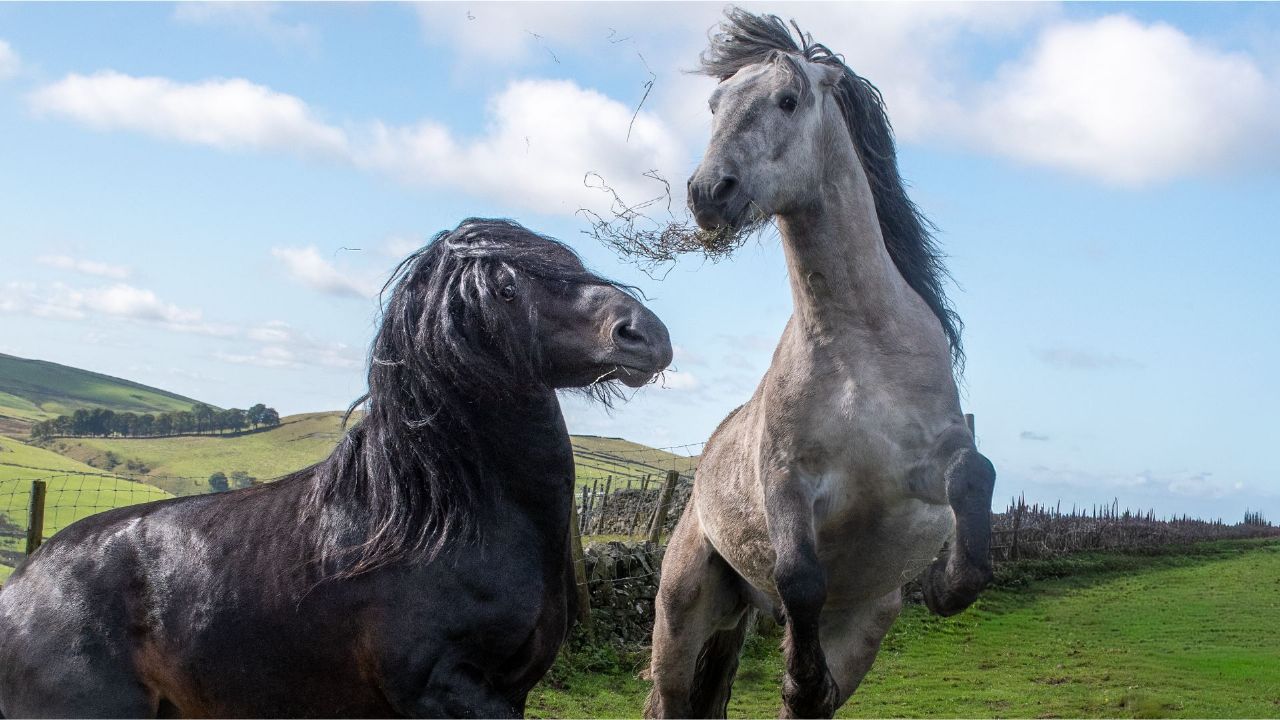10 years of Simple System HayCare!
During its 10 years so far, it has become apparent that HayCare is so much more than a hay replacer...

Mares are seasonally polyoestrous which means that they have multiple reproductive cycles during spring and summer. Generally, mares will stop coming in season once the weather gets cooler, the grass declines and the days are shorter. But it can be that some mares, especially those living in and experiencing artificial light, will come in season continuously. More usually, they will have a strong or longer heat as a 'last fling' as it were before going into a settled phase until the early spring.
Changing hormones result in changes to behaviour. These changes can be more marked in younger mares and fillies who have yet to adjust to their fluctuating hormones, mares who have already had a foal and mares on starchy or sugary diets. Never forget that mares are as entire as stallions and their behaviour changes due to hormones are not necessarily aberrant but actually perfectly normal!
Switching to a more appropriate diet can help them to cope. We suggest utilising high quality forages that are naturally low in sugar and starch, with lucerne feeds and sainfoin feeds commonly recommended. A high quality forage balancer should be fed alongside, with Calm Balance + being an excellent choice as it also contains natural calming support.
Stallions are not subject to the cyclical changes that affect mares. Their drive is constant but is affected by the changes in the season, either directly or due to the fact that mares are not in season in the cooler, darker times of the year and so they are not stimulated by the sight, smell and sound of mares wanting their attention, or indeed, being presented to the dummy for collection. Stallions are potentially active and fertile all year and even in the “off” season, can become aroused or more challenging in their behaviour. Again, a low sugar and starch diet will help, along with a suitable balancer such as Stud Balance +.
Geldings tend to be less affected by hormonal issues when comparing to a mare or stallion. Some geldings do however display 'riggish' or stallion like behaviour, and they too may need additional dietary support in the form of a low sugar, low starch diet with the addition of Calm Balance + as their forage balancer.
To discuss your horse's hormonal needs and how you can look to support them nutritionally, contact Simple System's Feed Line on 01728 604 008 or complete the online advice request form here.
During its 10 years so far, it has become apparent that HayCare is so much more than a hay replacer...
Grass has the potential to grow all year, which is different from many other plants. Certain things are necessary for this growth, but if they are not met, the grass will be dormant, waiting for conditions to improve.Â
Rain fall can trigger growth akin to a spring flush, especially if temperatures are high. Even whilst true spring may be in the past, the risk for those prone to laminitis will rise.